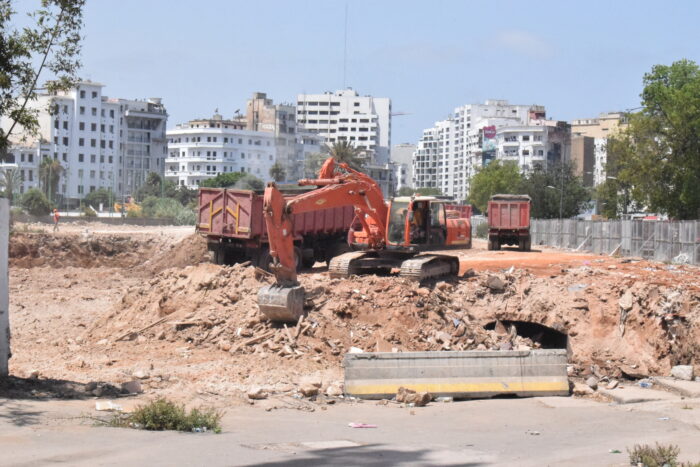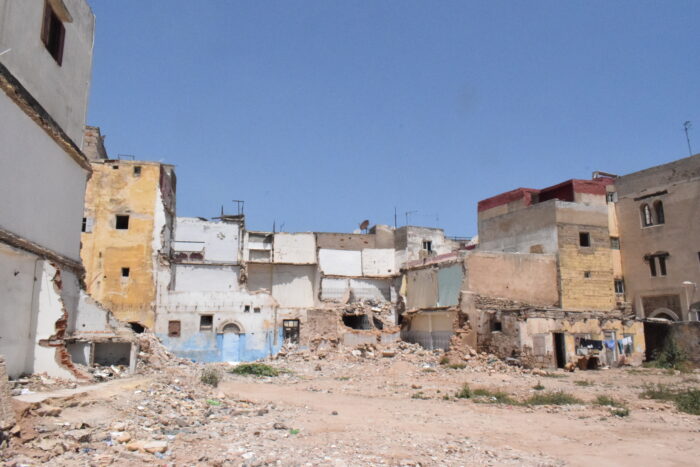Home to 3.6 million people as the most populous city in Morocco, Casablanca is different in the summer. Hectic and buzzing with activity all year, it seems that the hustle and bustle lose its intensity with waves of holidaymakers heading towards other destinations, in Morocco and abroad. Within a perimeter of no less than eighty kilometers around, the Atlantic Ocean attracts beach lovers all week, especially the young. But 2024 has been a different kind of year so far. It seems that the efforts at renovation and reconstruction, which had started long before the pandemic, have achieved their highest momentum this year. And visibly, they are not decelerating now.
On the contrary, numerous infrastructure projects are in progress. Others are being finalized, like T3 and T4, the two 26.5-kilometer-long tramways that will become operational this summer. Their construction was strongly delayed by the inflation following the pandemic. But it’s all history now, the two lines are in the test phase.
All in all, it would be redundant and of little interest to highlight the progress of these programs, but fundamental political, economic, and governance insights hide behind the actual upturn of Casablanca.
Road to WorldCup
With Morocco hosting the CAN 2025 and co-hosting the World Cup in 2030 with Portugal and Spain, it seems that the deadlines are just tight. Nonetheless, this is not the reason why projects seem more or less on time, far better than years ago when delays were an inescapable general rule.
In Casablanca, the strong thrust in development is popularly linked to the appointment by King Mohammed VI, in October 2023, of Mohamed Mhidia, as Wali of the Casablanca-Settat region and Governor of Casablanca Prefecture.
Mohamed Mhidia was seen in charge every time and in every region where the state thought big. Before Casablanca, he was Wali of the Tanger-Tétouan-Al Hoceima region between 2019 and 2023, after holding the same office in Rabat-Salé-Kénitra. Both regions were subject to a total metamorphosis. Tangier hosts Tanger Med, the leading Mediterranean transshipment port with more than 8.6 million containers in 2023. On the other hand, Rabat is praised for its modern infrastructure, well-being, and continuous improvement. The three regions create a little less than 60% of the national wealth.
Should these be considered as accomplishments of one official? Obviously, no. But they are typical examples of a system of governance where the establishment officials are entrusted with the most important missions. Nevertheless, elected representatives sitting on the cities’ councils seem disconnected from what’s happening in Morocco generally, even frequently failing to hold meetings because of endless squabbling.
This has not changed after the 2021 general elections brought to power right-wing parties considered close to the establishment. In Casablanca, the city council is mainly composed of members from RNI (Rassemblement National des Indépendants) and PAM (Parti de l’Authenticité et de la Modernité). These two parties ousted the Islamist party PJD (Parti de la Justice et du Développement) which boasted a majority in the city council, won during the previous 2015 elections.

Even though city council representatives hinge on authorities under the jurisdiction of the Ministry of Interior to carry out their office, they seem more of a hindrance to development than a force of empowerment.
What happens though to cities bereft of a similar strategic status and where no officials with the same profile and background are appointed? The answer is common knowledge in Morocco. Development is slower, and opportunity is scarcer.
What is this change bringing about?
Politically, the tide has turned since the PJD’s overwhelming defeat in the 2021 elections, bringing theoretically more cohesion between the state and right-wing parties sitting in the city council. In terms of business, the construction industry will obviously thrive, with the Casablanca-Rabat axis hosting most of Morocco’s construction companies.
The sector itself achieved, according to the ODC (Office des Changes), a global national revenue of 59.7 billion MAD in 2021. Moreover, Nizar Baraka, Minister of Equipment, announced an investment of 64 billion MAD in the construction sector for 2024, equivalent to an annual increase of 54%. Things will certainly get better.
With 22% of national growth, Casablanca-Settat will certainly prosper more, attracting more workforce to a region whose surface area only represents 2.7% of the national territory. Casablanca itself grew bigger with waves of Moroccans flowing in from everywhere, near and far. When it was rebuilt by King Mohamed Ben Abdellah at the end of the 18th century, he ordered fishermen from the region of Agadir to be relocated inside the walls of Anfa, Casablanca’s old name. In the first half of the 20th century, the city welcomed people from other regions looking for a better life. Today, this population movement is just routine.

On a larger scale, Casablanca represents a phenomenon that will shape the country’s future. Being a rural country historically, Morocco started in the 1960s to shift drastically to urbanization. According to the HCP (Haut Commissariat au Plan), Moroccan cities will be home to 73.6% of the country’s inhabitants in 2030, as opposed to 60.3% in 2014. This change has already brought about a continuous process of cultural transformations, steadily erasing differences between regions of a once much more diversified country. Only delving into remote areas will give explorers a sense of the Morocco that once was.
Casablanca’s Search for Originality
Visitors to Casablanca in search of a change of scenery will probably be disappointed. Its old medina does not come anywhere near the charm and the exoticism of those of Marrakesh, Chefchaouen, or Fez. Though it had been renovated many times and its run-down buildings completely demolished, it is still surrounded by large slums in the south that stain the actual boom of the city. Their demolition began when Mohamed Mhidia took over, but they seem to resist.
In the vicinity, old buildings are still being demolished, and new ones are being rebuilt. This is easily noticeable in the city center, more or less located within Sidi Belyout, one of Casablanca’s sixteen districts. Known as the European city during the colonial period, i.e., between 1912 and 1956, it was contrasted with the Indigenous city where Moroccans were confined to the outskirts.
But Sidi Belyout contains a large number of art-déco and néo-mauresque constructions, belonging to colonial architecture trends that emerged in Algeria under the French colonization and sprouted up in the neighboring Morocco and Tunisia. Today, these buildings are still holding on, notwithstanding a generally neglected appearance.
Casamémoire, a non-profit organization advocating for the protection of the 20th-century architectural heritage, hadlisted 150 colonial buildings in Casablanca. They are now around 300 after l’AUC (l’Agence Urbaine de Casablanca) listed many more. According to Karim Rouissi, an architect and member of Casamémoire, once the buildings are indexed, they are protected. “But if they are in ruins, they have to be demolished even though they represent a protected architectural trend. Security is more important,” he said.
In and around Mohamed V Boulevard, one of the Sidi Belyout district’s famous streets, numerous buildings have already succumbed to bulldozers. From the markings, new buildings will be constructed instead, and, needless to say, the cost will be among the highest. This is the case of an immense new business center where sales of offices and luxurious apartments have already started, though the bulldozers are still cleaning the site.
According to the mapping real-estate tool Yakeey, the median price per square meter in this area was 11,000 MAD in 2023. A total of 1,200 real estate deals were also signed in the same year in this district. Moreover, the Real Estate Assets Prices Index (APAI) published by the Moroccan central bank indicates that there is a slight price increase of 0.4% in Casablanca in 2024. In addition, all Casablanca real estate transactions amounted to 42 billion MAD. A huge sum!
Visitors to Le Marché Central, a colonial néo-mauresque market still considered the heart of the area regardless of the passage of time, have to bear the sight of the facing Hôtel Lincoln scaffolding. Built in 1916 as Immeuble Bessonneau by the French architect Hubert Bride, this art-déco néo-mauresque hotel had long been left to rot before and after it was recovered in 2005 by the AUC.
Long story short, Réalités Afrique Group is now investing 31 million euros to rebuild it. But it should not fail the CAN 2025 December deadline.
Written in English by Hicham Aït Almouh




